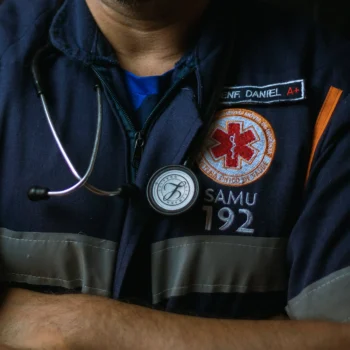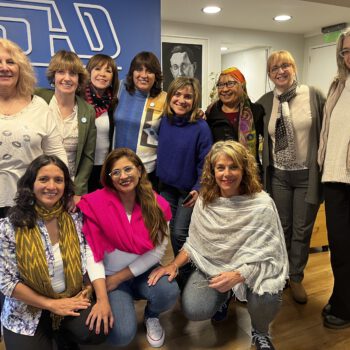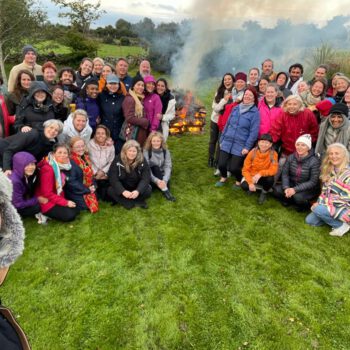The echo of the unlived experience: when trauma is absence
Each and every one of us —I dare to say without exception— has gone through traumatic moments from the beginning of our lives. “Trauma is a fact of life”, says Peter Levine. It is not only about major events, but also small wounds that were never seen, named or contained.
The other day I was looking at screenshots in my phone and found a phrase by Luciano Lutereau from 2023:
“The strength of the past lies not in what happened. Paradoxically, what happens repetitively in our lives is precisely what did not happen.”
This time it hit me differently, perhaps because it resonates deep within me. I did not just understand it —I felt it— in my body, in my personal processes and also whilst working with people who have been wounded by the invisible:
That which they did not receive.
What they were not able to name.
What no one validated.
Repetition in emotions, relationships, and inner conflicts often has no clear cause. It may not come from what happened, but from what didn’t. Sometimes the deepest wounds are absences:
A hug we did not receive.
A word left unsaid.
The care that was absent.
From a psychoanalytic to the neuroscience of trauma, authors like Freud and Gabor Maté —so different from each other— coincide in something radical:
What has not been lived does not disappear. It repeats itself.
And this does not repeat itself as a memory -although body memory has an important role here– but rather as a patter, or as a body sensation. It expresses internal and external symptoms, such as a physical or emotional pain that you cannot explain. It manifests itself as a choice that seems yours, but is actually from the past.

Freud and repetition: the echo of what was not symbolized, the unfinished calls to return
Although I am not a psychoanalyst, I did spend many years analyzing this and I have a deep respect for Freud’s thinking. I am moved by how his body of work was weaved into the tissues of his own trauma –personal, family and social– which without a doubt shaped his view of the human psyche.
One of the concepts that impacted me the most was compulsion to repetition: this unconscious force leads us to recreate over and over the bonds or scenes that wounded us in the first place. Why do we do that?
We do it because in some small way we are still hoping to experience that which did not occur in the first place.
A tender mother.
A dad that acknowledges us.
Stopping someone from leaving.
I remember when I saw this with clarity, it was like someone dumped a bucket of cold water on me. It happened during a therapy session where the intention was to get out of –and then recover– from a co-dependent relationship.
That’s when I understood: repeating does not repair.
The subconscious mind is not run by calendars. We act as if we are still living in that story, trying –once again– to change the ending.
At this point, Freud makes a fundamental turn: it is not enough to remember and relive it. We have to grieve.
We must grieve not only what we have lost, but also what we never had.
- The mother who was not the way we needed her to be.
- The childhood we did not have.
- The emotional safety we never got.
The psychologist Nilda Chiaraviglio once said:
“In order to be adults, we have to stop being children.”
I know now that it is not about denying the past, but it’s about remembering what it lacked in order to stop looking for it in places where it cannot happen.
That is the real start of something new.
Gabor Maté and trauma as disconnection
Dr. Gabor Maté has a somatic, trauma-informed approach. He proposes something similar but uses a different language. First he affirms that we have erroneously labeled trauma. Trauma is not the same as suffering, and not every stressful event is traumatic, although any traumatic event is stressful. Trauma limits and constricts.
“Trauma is not what happened to you. Trauma is what happened inside you as a result of what happened.”
My link to Gabor began when a psychologist friend, João Ferreira, talked to me about him. Some time after I watched Gabor’s documentary The Wisdom of Trauma. I cried. I felt things. I felt deeply identified.
Days later, I decided to apply to the Compassionate Inquiry® training. It was a transformative process. Since then, I have been integrating his approach into my work, with a conviction that it is born from the lived experience.
Gabor affirms that what did not happen, what was not named and what was not seen, creates an internal rupture. He also states that trauma is not only related to the “events that should not have happened”, it is enough that the good things that should have happened, didn’t.
Trauma disconnects us and the body becomes disconnected to ensure our survival. We repress emotions, needs and desires.
We adapt, and that adaptation was, in many cases, a strategy that came from love. However, when we are still living through that adaptation as adults, what once protected us, now limits us.
Stories that repeat themselves: examples of common experiences you may have
- Relating to people who cannot take care of you emotionally
- Giving a lot, but not knowing how to receive
- Repeating the same arguments and not understanding why they hurt so much
- Avoiding hard conversations for fear of rejection
- Seeming extremely independent
- Living with tension or anxiety as if it was normal
- Comparing yourself, minimizing yourself
- Waiting for constant validation, and if you don’t get it, you drift away
These are not failures, they are traces. These are patterns that were born from a need to survive, but are now asking to be seen and transformed.
How to stop this cycle? A possible path
Gabor Maté taught me to look at trauma from another lens: from the connection to oneself and the possibility of healing. What happened outside (the traumatic event) is no longer important and my focus goes to what is still alive inside me: the emotional experience that remains.
Gabor says:
“The past is important as long as it helps us understand the present. Trauma is what is still alive within us because it happened within us.”
Healing is a unique path for each of us. Although there is no formula, I found something that has worked for me, for others and for the processes I go through with my clients.
I share here some of the important aspects of this path:
- Learning to feel in a safe way. Being in contact with your emotions, needs and internal narratives.
- Recognizing your beliefs and feelings without identifying with them. You are not your fear. You are not your shame. You are not your story.
- Creating an internal space where your truth can emerge. There is a place in you with enough safety and compassion that wants to stop running and wants to start observing.
During sessions I guide people to the present moment, to inhabit their body and experiment with that which emerges as a non-judgemental presence. This is the state in which we can contact the emotional core of a wound.
“Give sorrow words: the grief that does not speak whispers the o’erfraught heart and bids it break.” — William Shakespeare
And although naming is therapeutic in itself, integrating trauma requires something else.
I understood this deeply during my Compassionate Inquiry® training. One of my greatest teachers was Sanjog Kaur, who directs CI in Spanish and with whom I have been working as a volunteer for the Professional Training program. During a session with her I saw –through my body and not just through my mind– the importance of somatic-emotinoal mirroring.
When there is no integration, trauma looks for resolution in repetition. With integration, we become open to something new.
What can happen
- Feeling and elaborating on grief for what did not happen.
- Liberating the body from somatic responses that used to protect us in the past but limit us in the present.
- Rewriting our present from our emotional truth and not from our wounds.
This cannot happen on its own.
And it does not happen quickly.
But it is possible, and when it is possible, it looks different. This is not a therapy that repeats, it is a therapy that repairs.
“”In response to one of Dante’s questions, a soul condemned to Hell tells him that there, the soul can see the future but not the present. To lose the ability to see the present… could that not be, in itself, a form of hell?” — Gabriel Rolón
I ask myself this question often when I see how some people live trapped between painful memories and fearful futures, unable to connect to their bodies, to their present and their truth.
This is also why I choose to close with this phrase by Peter Levine, which I heard during a very special class with Gabor Maté:
“Trauma is not the end. It is the entry doorway into the body’s awakening and emotional freedom.”
My purpose is to walk with people through the doorway .
My purpose is to offer a safe space, where what did not happen can be felt, cried and validated. I seek to offer a space where wounds can stop bleeding in silence and can start turning into scars.



